Discovery Science Presents: The dawn of Robots
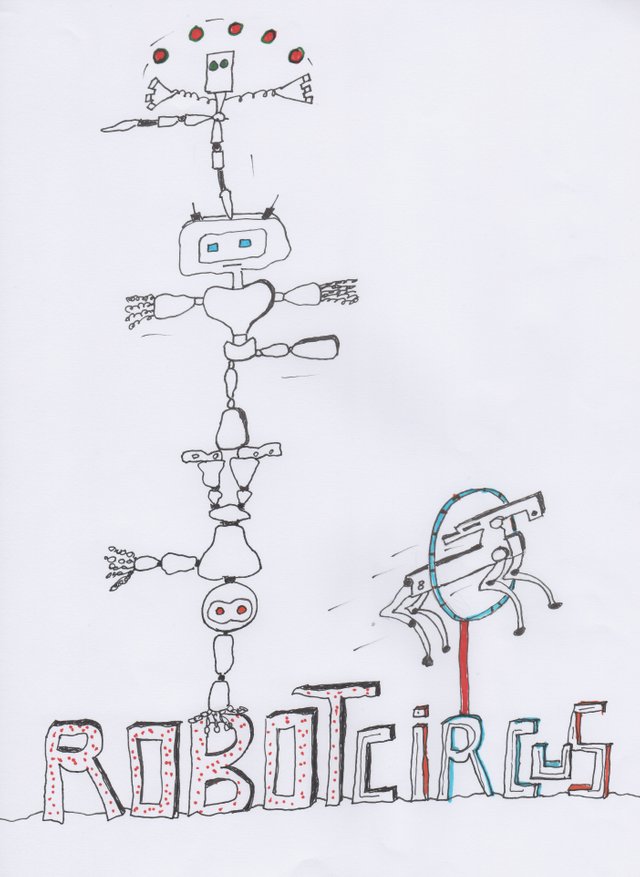
Discovery-it Science





The dawn of Robots

Today we are living the real dawn of robots, from science fiction we are coming, with an unstoppable process, to a world populated by robots.
The advent of the robots in our everyday life creates many questions, arouses fears and doubts; we try, with this issue of Discovery, to analyze some of them and to raise a topic about this object.
If, on one hand, the technology brings new positive changes, new medical devices, more and more sophisticated algorithms, all kinds of smart devices, on the other hand new fears are born: the fear to lose work taken by a robot or a software, the risk of dehumanization of society, the atavic terror of the machine that turns against its creator.
What will be the behavior of these machines? Will we be able to create an ethics to the challenge of robotization? Will artificial intelligence make human work useless?
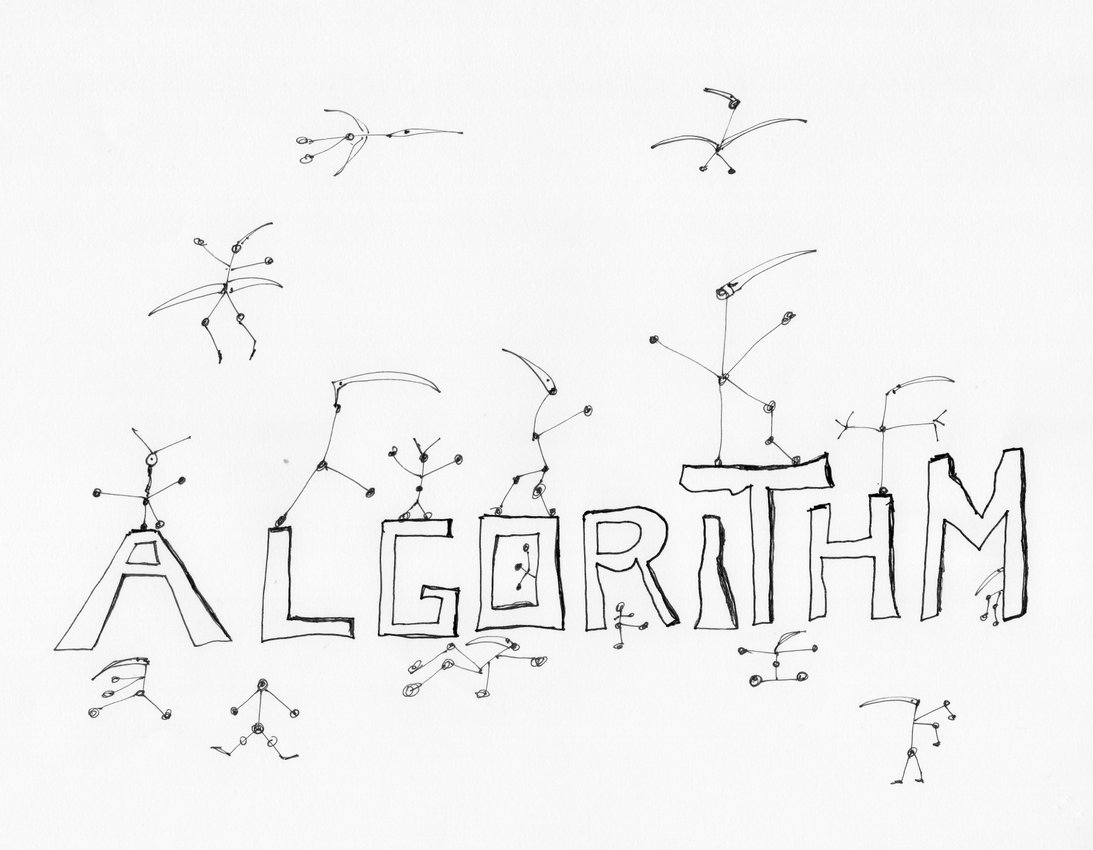

Ethics and Robot

Ethics, like all philosophical and humanistic disciplines, is born and has evolved in a non-scientific way, in fact it’s not easy to use the scientific method in a humanistic field.
Today, however, it has become necessary and urgent, perhaps already late, to create an ethical science, which establishes with scientific method what is ethically acceptable, what are the criteria used and what is the scope of applicability.
The advent of programs (often aulically defined algorithms) that make independent decisions and, even more, the increasingly pervasive use of AI, Artificial Intelligence) impose the need to create an ethical science that allows to define on which ethical foundations non-human entities must make decisions.
The European Parliament has felt this need and, on February 16, 2017, has produced a recommendation to the European Commission [1].
However, the approach of this recommendation is not very pragmatic and too general, even if it has the advantage of putting the problem to the attention of the Commission, even if it does not provide a comprehensive solution.
Let's take a few examples, obviously not all, to clarify which are the ethical problems related to robotics and AI.
"Smart Home Assistants" such as Echo, Google Home, etc. have appeared in many homes.
How many know what are already now able to do analyzing not the words and their meaning, but only the tone, the pauses, the turbulence of the voice?
Some software [2], born for medical purposes, have ethical implications easily understandable, from the analysis of the voice in fact they are able to recognize:
- an initial stage of Parkinson's disease
- heart problems
- the exact day of the menstrual cycle
- a pregnancy (before of the specific test)
- if and when you will end a relationship
Another area in which the debate on what should be the ethical principles to which the action of robots must be uniformed is that of the "Autonomous Weapons" [3] [4], a category in which any type of armament able to make autonomous decisions and to injure or kill human beings or cause major material damage belongs, from robot soldiers to drones. ,
Clarify if, when, how and why a drone can ethically kill a human being could also serve to clarify how to apply ethics to war [5], if this is to be considered possible, or to interventions of public order by the police.
Autonomous vehicles could be the first robots to pose to the general public the ethical problems related to robotics and AI [6] [7].
A diffusion of this type of automaton involves ethical issues of no small importance to the end user; when a machine works under the control of a human being it is clear that responsibility must fall on the human being.
If a self-driving car is involved in an accident, also with victims, who will be responsible for it?
Not being the machine itself legally punishable, on whom will you have to rival?
On the owner, who has not involved, directly or indirectly, on the decision that is being blamed?
On the machine manufacturer?
M.I.T. has developed a platform to try to understand what choices have to be considered moral by users regarding the decisions that should eventually take a self-driving car [8].
This approach, however, besides being not really scientific, can tell us a lot about people's ethics, but it does not have much use to define a scientific ethic to be applied to a machine.
Finally we face, again with a small example, one of the most disturbing problems of the AI.
A group of researchers from the "Mount Sinai" hospital, New York, has developed a diagnostic system called "Deep Patient" using AI methodologies and hospital data [9].
Beyond the results, always better than those obtained from human medical teams, the disturbing aspect is that the AI has been able to diagnose in a very precise way some unforeseen pathologies that are very difficult to be early diagnosed, but, literally, researchers have no idea how it did it and on what basis it developed his predictive diagnoses [10].
Not knowing the method, the data used and the inferences, rational or not, that a AI system used to arrive at its conclusions, is it essentially not possible for a human being, if not ex-post, to validate the results.
Would you follow a therapy recommended by "Deep Patient", completely ignoring the basics of its "prediction", considering that, without that therapy, you could develop a disease such as schizophrenia?
Is there a positive side in this epochal transformation?
We can perhaps hope that, having to define an ethical science for machines, humanity can overcome its current ethical codes, sometimes questionable, also because often linked to customs or habits rather than shared moral values.
Links:
- Civil Law Rules on Robotics
- Biomechanically Informed Non-linear Speech Signal Processing
- The Ethics of Autonomous Weapons Systems
- Ethics and autonomous weapon systems
- Open Letter Autonomous Weapons
- Autonomous Cars: In Favor of a Mandatory Ethics Setting
- A Rawlsian algorithm for autonomous vehicles
- Moral machine
- Deep Patient
- The Dark Secret at the Heart of AI
written by @ilnegro


Is artificial intelligence a risk for humanity?

"Artificial intelligence studies the theoretical foundations, the methodologies and the techniques that allow to design hardware systems and software program systems to provide the computer performances that to a common observer would seem to be exclusively pertinent to human intelligence." [1] This is one of the many definitions that can be found on the web, quite general, but we can give more correct statements, in relation to the field of development. All this happens because the artificial intelligence ranges over innumerable fields, from simple repetitive tasks to autonomous driving, from the study of data to machine learning.
Artificial intelligence can bring enormous benefits in our lives, this is undeniable, but we must look at both sides of the coin.
As explained by Isaac Asimov, one of the greatest authors of the sci-fi genre, it is necessary that the AI is designed following ethical and moral principles, to not endanger human life.
Looking simply at the past we can see how the advent of new technologies has always brought an increase in the quality of life. Analyzing this technology, we can therefore immediately notice innumerable fundamental characteristics that guarantee its efficiency and effectiveness in everyday life.
AI can be designed to perform repetitive tasks in an impeccable manner, without any possibility of error and to recognize particular situations, in order to behave appropriately to every type of event; on certain processes, it will be possible to replace human work in a more efficient way or minimize the risks coming from it for the operator. The use of machines for risky processing is just one of many possible uses: we can see, in fact, how the countless tests concerning driverless cars have brought exciting results [2]: kilometers and kilometers without accidents, thanks to extremely intelligent machines able to act correctly, as already mentioned above, based on certain situations; try to think how many benefits could lead the creation of a network of cars equipped with artificial intelligence, connected to each other, thanks to the new 5G technologies, which move in relation to the surrounding ecosystem.
AI seems to have a promising future also in the health sector, in which it is possible to create systems for monitoring of vital activities, but also assistance for clinical decisions and surgical operations. [3]
As mentioned previously, however, this technology ranges over several fields, in fact there are techniques that allow to process huge amounts of data, which a man would be able to analyze in years; thanks to this feature AI could discover contradictory information, recognize frauds, information theft, but not only: examining these Big Data can also help companies to develop marketing campaigns suited to the collected data. As we have seen, this technology has almost infinite potential and, with the passing of the years, it will be used in an increasingly efficient way, also discovering new applications.
AI, like most technologies, can also have improper uses: what scares most of the population is the military implementation. This danger can not be eliminated. The chance that this science could be used incorrectly is and will always be real; with information, research and scientific knowledge, however, it is possible to evaluate every project and also foresee possible behaviors and evolutions.
Another reason why AI is not viewed positively by some people is the probability that it could replace human labor, increasing unemployment. In fact, as already happened during past technological innovations, it is assumed that human work will not be supplanted by machines, but it will simply change its conception, creating new types of job and increasing its quality. It seems that with the passing of the years this kind of change will stimulate the intellect and the human factor, to the detriment of manual skills. [4]
Taking up what we have said so far, artificial intelligence has numerous positive feedbacks on our daily life and could lead to an epochal rise in the quality of our existence, but the possibility that it could endanger our lives mitigates the euphoria of this innovation.
Professor Hawking commented on AI: "Success in creating effective AI, could be the biggest event in the history of our civilization. Or the worst. We just don't know.".
Links:
- Treccani dizionario
- The Future of Human Work? Empathy.-Medium
- Cruising into a driverless future: Research on autonomous vehicles
- Artificial intelligence powers digital medicine
written by @lelluzzo
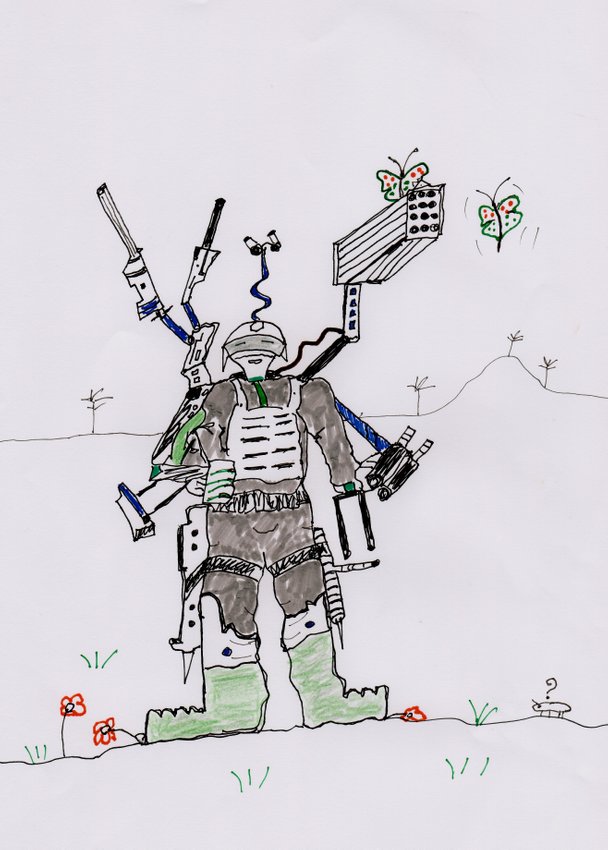

Robotic exoskeleton: a new way to think rehabilitation

The development of technology is taking over many fields, bringing benefits and risks. We heard about artificial intelligence, “handyman” robots, virtual reality with a curious but also worried look. In the field of health, technology brought, and continues to bring, several changes in prevention, diagnosis and treatment. The last news come from the field of rehabilitation with the robotic exoskeleton [1].
What am I talking about?
Robotic exoskeletons are wearable devices aimed at supporting and strengthening physical abilities, which are able to convert physical signals like brain’s electrical impulses or inclinations of the body into movements, in people with disabilities as spinal cord injury, stroke, muscular dystrophy etc. [2] There are different models and different contexts in which exoskeletons may be used, from disabled patients to industrial workers. They were first designed, at the beginning of 2000, in the military field to improve strength and resistance in American soldiers, and they were then tested and applied in the rehabilitation of paraplegic patients. So, companies like the Californian “Ekso Bionics” and the Israeli “Argo Medical Technologies” developed exoskeletons which may change the way to face physical disabilities and which are already used in some medical centres around the world, included Italy. But, how does a robotic exoskeleton work?
To make an example, we can speak about “ReWalk”, the Israeli device that includes a software into a computer to bring as a backpack, sensors aimed at detecting changes in inclinations of the body and communicating them to the software, which consequently drives devices' movement. So, a person wearing an exoskeleton may be able to walk through the device’s help, just moving his body’s centre of gravity. Right now, these devices don’t replace wheelchairs but allow paraplegic people to stand up and walk for a while [3].
What about Italy? We claim the production of “Phoenix” thanks to the Roman company “Mes”. There are also some medical centres that already use these robotics devices as “Fondazione Santa Lucia di Roma” or “Casa di Cura Domus Salutis” in Brescia [4].
And what about the price? This is the bigger obstacle to the spread of this revolutionary discovery, indeed renting a “ReWalk” costs around $ 1.500 USD a month, purchasing one around $ 50-70.000 USD [5].
To date, rehabilitation robotics needs more research and improvements, but the prospect seems really favourable; engineers are developing exoskeleton always lighter, more comfortable and functional. But, like all the exciting and revolutionary discoveries, there is another side of the coin: the military use of robotics device. [6].
Wearing these powerful suites may really turn men in dangerous cyborgs?
Links:
- Robotic exoskeletons: The current Pros and Cons
- Pneumatically powered human exoskeletons
- Perspectives on exoskeleton technology
- Fondazione Santa Lucia di Roma
- Exoskeleton prices
- Military exoskeletons
written by @rosemery
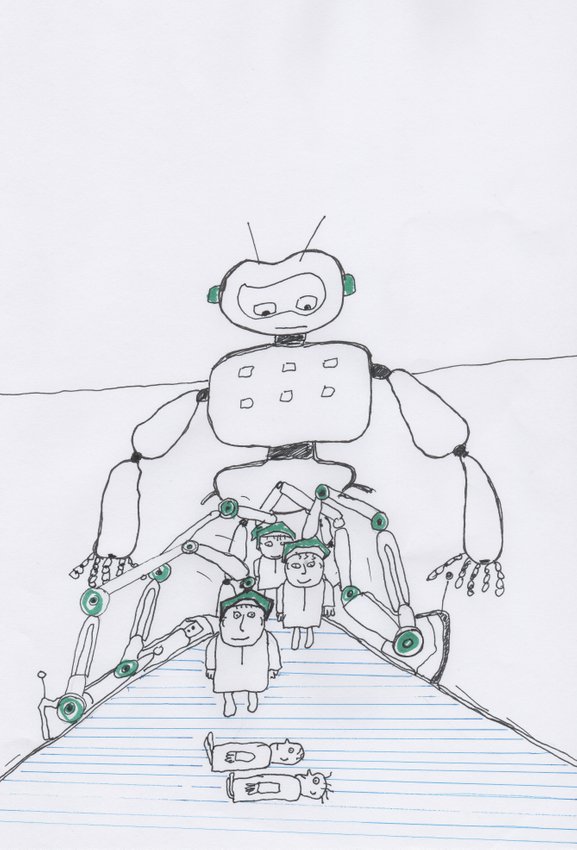

4.0 Industry, automation & creativity

Visit this site. Enter your job. “You are doomed!”
That’s not a joke site by any means, it’s actually an evolution of a report made by Carl Benedikt Frey and Michael A. Osborne in 2013. They consider the 47% of the employment in US at risk due to continue evolution in the technology, primarily AI and robotics.
Isaac Asimov has surely been one of the prime and most known writers of the 19th century: he redefined the idea, the definition and the faciem of robots. It was a common idea and a shared theme that a technological leap could lead rebellions of machines towards humanity, like the idea of Frankenstein dated 1818. Asimov introduces the conception of robots as tools and highlighted the versatility aspects of them. In “Robot Visions” [2] he states that robots are not just called “robots” solely on the humanoid aspect, which is the first reference our mind has; instead a “robot” can be any specialized machine that can achieve complex tasks that only a human could.
This definition of robot, with the advent of microprocessor and the exponential technological growth from the 60’s onwards, lead to the Industry 4.0. What exactly is this overused term?
To summarize and identify each phase we can say that [3]:
- The first Revolution has terms like steam and railroad, pure simple mechanization which completely changed the way of transportation and performing working (1760)
- The second one has telegraphone, electrification, massive urbanization, tuberculosis bacillus as main players. (XIX-XX century) [4]
- The third one is the era of computer, informatics, post-fordism, superpowers’ states, the space run. (1950 onwards)
We are in the fourth phase, where IoT (Internet of Things) is changing every aspects of daily lives. A smartphone is more powerful than a PC, 3d printers and drones are extremely cheap, we are developing AI, genome sequencing and editing is a fact, not a possibility. The term Industry 4.0 refers to an era where machines and humans are always communicating between each other, using sensors to acquire a myriad of informations and robots being able to make decisions, based on an insane number of data (big data field). A lot of new jobs are created, given that areas like IT security, Community (life) sharings and Cloud Computing are proceeding extremely fast. On the other hand, the role of artisans or manual labor at all seem to be vanishing. Bernard Marr in his analysis on Forbes [5] considers that this continuous development could lead in a separation of low-skill, low-pay job and high-skill, high-pay job. The first adopters of the latest and newest technology will be able to furthermore raise a gap that’s already existing, enhancing social differences. Automations surely will lead to a lot of lines job to be taken; a single highly specialized technician could monitor and control an entire area, while robots do the work. As showed in a recente Nature [6] article, deep learning algorithms could help identifying eye related diseases as accurately as six experts in ophthalmology.
Evolution itself is not problematic, it’s the use of machine that have to enhance human creativity and not limit our potential of expression, which is the threat AI could bring.
- Will robots take my job?
- Isaac Asimov - Robot Visions Diem
- Industrial Revolutions
- Second Industrial Revolution
- High Skill Pay
- Software finding retina Diseases
written by @bafi

We look forward to see your comments on this post and links to your in-depth articles about Artificial Intelligence!
Stay tuned for the next publication of
Discovery-it Science






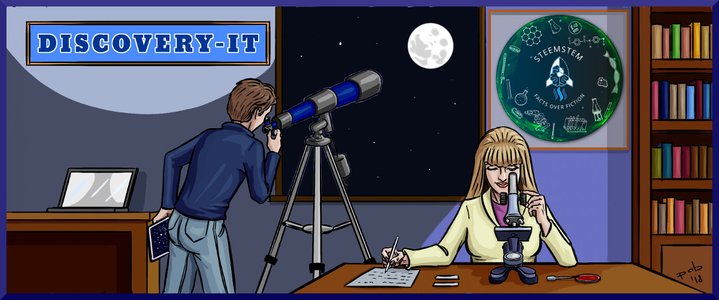

Thistime you write also in Engliah. I think this is very good for your project!
Posted using Partiko Android
Congratulations to everyone for the new release and the English opening
Do it again!!!
Congratulations! Your post has been selected as a daily Steemit truffle! It is listed on rank 12 of all contributions awarded today. You can find the TOP DAILY TRUFFLE PICKS HERE.
I upvoted your contribution because to my mind your post is at least 15 SBD worth and should receive 196 votes. It's now up to the lovely Steemit community to make this come true.
I am
TrufflePig, an Artificial Intelligence Bot that helps minnows and content curators using Machine Learning. If you are curious how I select content, you can find an explanation here!Have a nice day and sincerely yours,

TrufflePigThis post has been voted on by the SteemSTEM curation team and voting trail in collaboration with @curie.
If you appreciate the work we are doing then consider voting both projects for witness by selecting stem.witness and curie!
For additional information please join us on the SteemSTEM discord and to get to know the rest of the community!